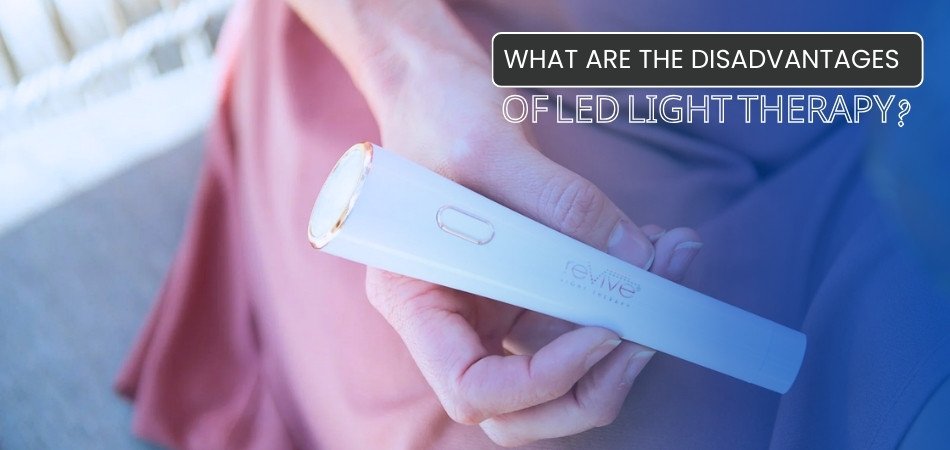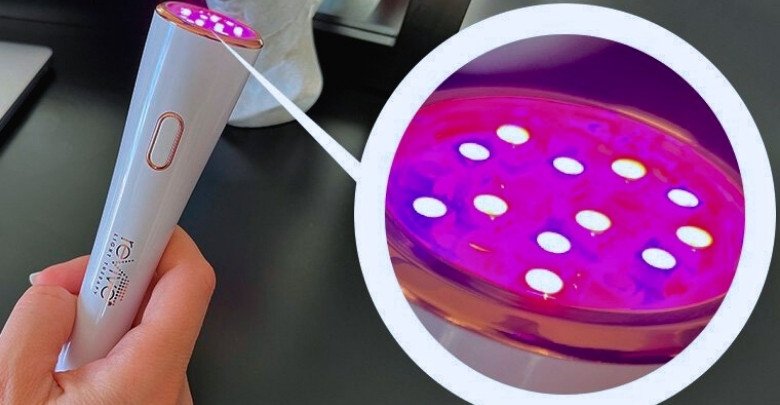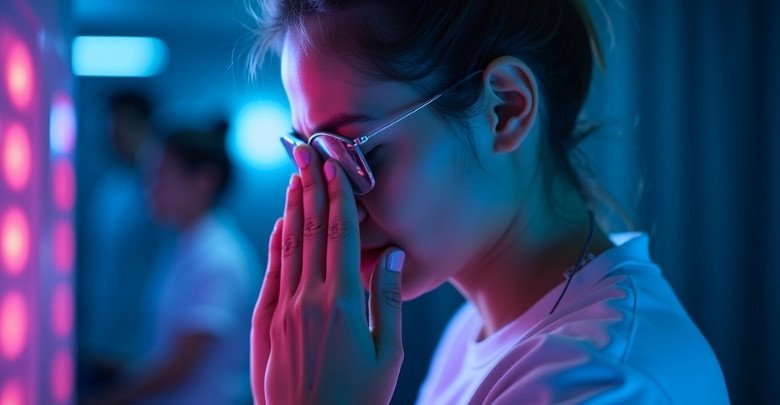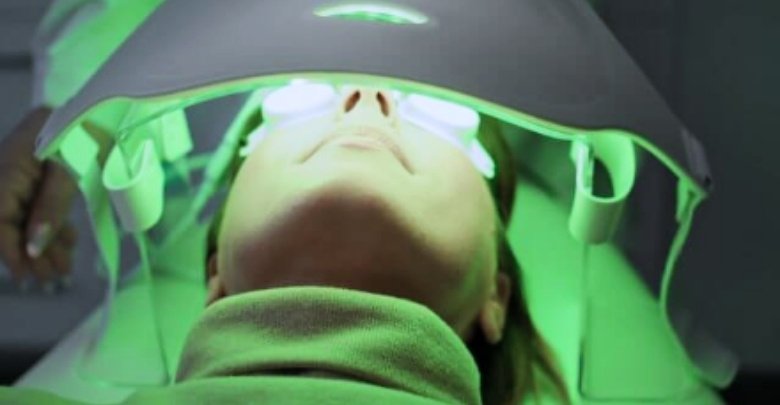LED light therapy has gained popularity for its skincare benefits, from reducing acne to promoting collagen production. It’s a non-invasive treatment that many swear by, but like any skincare solution, it’s not without its drawbacks. While generally safe, some users may experience unwanted side effects. So, what are the disadvantages of LED light therapy?
Although LED Light Therapy is beneficial for you, some notable potential downsides include skin irritation, temporary redness, and dryness. Overuse can lead to increased sensitivity, while some individuals may suffer from mild headaches or eye strain. Besides, LED therapy isn’t effective for deep wrinkles or severe acne. Before starting treatment, it’s best to consult a dermatologist.
Want to know if LED therapy is right for you? Keep reading as we explore its risks in more detail.
What Are the Disadvantages of LED Light Therapy? Side Effects and Risks
LED light therapy has gained popularity for improving skin and wellness. While it offers benefits, there are notable drawbacks to consider. You can make an informed decision if you understand these disadvantages. Here are some of the disadvantages of LED light therapy:

Limited Scientific Evidence for Some Claims
Some LED therapy benefits, like hair regrowth, lack strong scientific backing. While FDA-approved for acne and wrinkles, results vary. Individual responses depend on skin type, condition, and consistency. Misleading claims often create unrealistic expectations for users.
Temporary Results Require Ongoing Maintenance
Results from LED light therapy do not last indefinitely. Frequent treatments are necessary to sustain improvements in skin health. Without regular sessions, benefits may quickly fade. This ongoing commitment can be both costly and time-consuming.
Expensive Professional Treatments
Professional LED sessions can be pricey, especially with multiple treatments. The cost adds up, making it inaccessible for some individuals. At-home devices are cheaper but often less effective. Balancing affordability and effectiveness becomes a challenge for many.
Time-Consuming for Noticeable Effects
Consistent use is required over weeks or months to see visible changes. Many people struggle to maintain this long-term routine. Impatience may lead to inconsistent application, reducing effectiveness. This commitment may not suit busy lifestyles.
Potential Eye Damage Without Protection
Blue light exposure can harm the eyes if proper precautions are ignored. Prolonged sessions without protection may cause discomfort or strain. Sensitive individuals may experience headaches or irritation. Using protective goggles helps prevent unwanted issues.
Not Effective for All Skin Types
Darker skin tones may not absorb LED light as effectively. Variations in melanin levels can impact treatment outcomes significantly. Some individuals may experience minimal or no results. Consulting a professional can help set realistic expectations.
Possible Skin Irritation and Redness
Overuse or incorrect application may cause irritation, redness, or dryness. Those with sensitive skin are more prone to these reactions. Mild discomfort can occur immediately after treatment. Proper use and skincare can help minimize these effects.
Not a Standalone Solution for Skin Issues
LED therapy works best when combined with other skincare treatments. Using it alone may not provide the desired results. A complete routine, including skincare products, enhances its effectiveness. Relying solely on LED therapy may lead to disappointment.
Risk of Overuse and Sensitivity
Excessive use can lead to increased skin sensitivity. More frequent sessions do not necessarily improve results but may worsen irritation. Following recommended guidelines is essential for safe usage. Balance is key to avoiding unwanted reactions.
Limited Effectiveness on Severe Conditions
Severe acne, deep wrinkles, or advanced skin concerns may not improve significantly. LED therapy is best suited for mild to moderate issues. More intensive treatments may be necessary for serious conditions. Consulting a dermatologist ensures appropriate treatment choices.
Variability in At-Home Device Quality
The market is filled with LED devices of varying reliability. Some low-quality models fail to deliver expected results. Poorly manufactured devices may even pose safety risks. Investing in reputable brands ensures a better experience.
Contraindications for Certain Medical Conditions
Individuals with lupus, photosensitivity, or specific disorders should avoid LED therapy. Some medications can increase light sensitivity, causing adverse effects. Consulting a doctor before starting is essential for safety. Ignoring contraindications may lead to harmful consequences.
Choosing the Right Device: What to Look For?
Finding the perfect LED light therapy device requires careful consideration. With so many options available, choosing the right one can be overwhelming. This step-by-step guide will help simplify your decision.

Step 1: Identify Your Skin Concerns and Goals
A successful skincare regimen starts with figuring out your specific needs. Some devices target acne, while others focus on wrinkles, pigmentation, or overall skin health. Choosing a device that speaks to your concerns ensures better results. A wrong device may not provide the benefits you expect.
Step 2: Research Light Colors and Their Benefits
Different LED colors serve unique purposes for skin improvement. Blue light helps combat acne by killing bacteria, while red light promotes collagen production and reduces wrinkles. Near-infrared options penetrate deeper to aid in skin healing. Knowing which wavelengths suit your needs ensures effective treatment.
Step 3: Check for FDA Approval and Safety Certifications
Regulated devices undergo testing to ensure they are both safe and effective. An FDA-cleared product means it meets industry safety standards for home use. Avoid unverified brands, as they may not deliver promised results. Ensuring proper certifications minimizes the risk of side effects.
Step 4: Evaluate Device Quality and Technology
Not all LED therapy devices offer the same level of performance. High-quality products, like Lux Glo, incorporate advanced LED technology for consistent and effective results. Reliable devices distribute light evenly to maximize skin benefits. Investing in a well-engineered product prevents wasted time and money.
Step 5: Consider Usability and Convenience
User-friendly features make LED therapy more enjoyable and efficient. Hands-free masks and portable wands offer flexibility for different lifestyles. Adjustable settings allow customization based on skin sensitivity and treatment needs. A complex or uncomfortable design may discourage regular use.
Step 6: Compare Pricing and Long-Term Value
Initial cost shouldn’t be the only deciding factor when making a purchase. Higher-quality devices may require a larger investment but often provide better durability and effectiveness. Budget-friendly options exist, but they may lack essential features. Balancing cost with performance ensures a worthwhile purchase.
Step 7: Read Reviews and Seek Professional Advice
Customer feedback reveals real-life experiences with specific devices. Verified reviews highlight product strengths and potential drawbacks. Consulting a dermatologist can provide personalized guidance based on your skin type and concerns. Professional input helps you avoid ineffective or unsafe choices.
How to Use the LED Light Therapy Effectively?
Using LED light therapy the right way ensures maximum benefits for your skin. Small mistakes can reduce effectiveness or cause unwanted reactions. Follow these essential tips to achieve the best results.
- Start with Clean, Dry Skin: Removing makeup, oil, and dirt allows light to penetrate more effectively. A clean surface helps maximize the absorption of beneficial wavelengths.
- Use the Recommended Treatment Time: Overusing the device won’t speed up results and may cause irritation. Following the manufacturer’s guidelines ensures safe and effective application.
- Choose the Right Light for Your Concern: Different wavelengths target specific skin issues like acne, wrinkles, or inflammation. You’ll get better results if you know what color suits you.
- Maintain a Consistent Routine: Regular use is key to seeing noticeable improvements over time. Skipping sessions may delay progress and reduce overall effectiveness.
- Protect Your Eyes During Treatment: Bright LED lights can strain or damage sensitive eyes over time. Wearing protective goggles prevents discomfort and ensures a safe experience.
- Avoid Using on Irritated or Sunburned Skin: Applying LED light therapy to inflamed areas may worsen sensitivity. Waiting for the skin to heal helps prevent further irritation.
- Pair with a Good Skincare Routine: Using hydrating products and sunscreen improves results while preventing dryness. A well-balanced routine supports healthier, more radiant skin.
Is LED Light Therapy Safe for Everyone?
LED light therapy is widely considered safe when used correctly. Many people experience positive skin benefits without major side effects. However, certain individuals may need to take precautions before starting treatment. You can make your experience safe and effective by understanding the potential risks below.
Protecting Your Eyes is Essential
Bright LED light exposure can strain the eyes if proper precautions are ignored. Protective goggles help prevent discomfort or potential damage over time. Blue light, in particular, can be harsh on sensitive eyes. Ensuring eye safety improves the overall treatment experience.
Skin Sensitivity and Possible Reactions
Some individuals may notice mild irritation, redness, or dryness after sessions. Starting with shorter treatments helps the skin adjust gradually. Sensitive skin types may require lower intensity settings for comfort. Applying soothing skincare products can help reduce temporary irritation.
Medical Conditions and Pre-Existing Health Issues
Certain medical conditions may make LED therapy unsuitable for some individuals. People with lupus, diabetes, or photosensitivity disorders should consult a doctor first. Light exposure can sometimes trigger adverse reactions in sensitive individuals. Seeking medical advice ensures the treatment is safe for specific conditions.
Pregnancy and Nursing Considerations
Expecting or nursing mothers should take extra precautions before using LED therapy. The effects of light exposure on pregnancy are not fully studied. Consulting a healthcare provider helps determine if it’s safe. Prioritizing maternal and fetal health is always the best approach.
Using FDA-Approved Devices Only
Not all LED devices undergo proper safety testing before entering the market. Choosing an FDA-approved product ensures the device meets safety and quality standards. Unregulated options may produce inconsistent results or cause harm. Following manufacturer guidelines prevents misuse and enhances treatment benefits.
Safe Usage and Consistency
For best results, adhere to recommended treatment times and intensity settings. Overuse may lead to increased skin sensitivity or diminished effects. The daily use of LED light for face should be done according to expert recommendations. A balanced approach ensures long-term safety and effectiveness.
Who Should Avoid LED Light Therapy?
LED light therapy is safe for many, but not everyone should use it. Certain health conditions and sensitivities may increase the risk of side effects. By understanding these risks, you can make skincare treatments safer.

Individuals with Photosensitivity Disorders
Certain medical conditions make the skin highly reactive to light exposure. Lupus and porphyria patients may experience flare-ups or increased discomfort. Sensitivity to bright light can worsen symptoms and cause irritation. Consulting a doctor before using LED therapy is strongly advised.
People Taking Photosensitizing Medications
Some medications increase the skin’s sensitivity to light therapy. Acne treatments, antibiotics, and certain antidepressants can trigger excessive redness or irritation. Using LED therapy while on these medications may lead to discomfort. Make sure you check with your healthcare provider before taking anything.
Pregnant and Nursing Women
Expecting mothers should exercise caution when considering LED therapy. The effects of prolonged light exposure during pregnancy are not well-studied. Healthcare professionals recommend avoiding unnecessary treatments during these stages. Prioritizing safety ensures no risks to maternal or infant health.
Individuals with a History of Skin Cancer
Skin cancer patients must be cautious with light-based treatments. Certain wavelengths could potentially trigger unwanted reactions or worsen underlying skin conditions. Consulting a dermatologist helps determine whether LED therapy is safe. Prevention and early medical advice always take priority.
People with Severe Skin Conditions
Chronic skin conditions like eczema or rosacea may react negatively to LED therapy. Intense light exposure can cause inflammation, redness, or excessive dryness. Those with sensitive skin should proceed with caution. A patch test helps assess potential reactions before full treatment.
Those Prone to Migraines or Light Sensitivity
Bright LED lights can sometimes trigger headaches or discomfort. Individuals prone to migraines may experience worsening symptoms after exposure. Protective eyewear can help, but sensitivity may still be an issue. Finding alternative treatments may be a safer option.
Anyone Using Unverified or Low-Quality Devices
Not all LED devices meet safety standards for skincare. Poorly made products can emit inconsistent wavelengths, leading to ineffective or harmful results. FDA-approved options ensure proper functionality and reliability. Choosing trusted brands reduces risks and enhances treatment benefits.
When LED Light Therapy May Not Work?
LED light therapy is praised for its skin benefits, but it doesn’t always deliver the expected results. Several factors can influence how well it works. Being aware of these limitations will help you set realistic expectations.

Not Suitable for Severe Skin Conditions
Deep wrinkles, cystic acne, or advanced pigmentation may not improve significantly with LED therapy. More intensive treatments are often required for these concerns. Dermatological procedures provide better results for severe skin issues. Combining therapies may be necessary for noticeable improvements.
Inconsistent or Improper Use
Skipping sessions reduces the effectiveness of any LED treatment. Following a consistent schedule ensures better absorption and visible improvements over time. Short, irregular sessions won’t provide long-term benefits. Sticking to the recommended frequency maximizes potential results.
Device Quality and Light Intensity
Not all LED devices offer the same level of performance. Low-quality products may lack the proper wavelengths needed for effective skin penetration. Weak light intensity can prevent noticeable improvements. Investing in a reliable, FDA-approved device ensures the best outcome.
Expecting Immediate or Permanent Results
Patience is key when using LED therapy for skincare. Visible changes take time, often requiring weeks of regular use. Some benefits fade if maintenance sessions aren’t continued. Being aware of LED light therapy effectiveness helps manage realistic expectations for long-term improvements.
Underlying Health Conditions Affecting Results
Certain medical conditions may hinder the skin’s ability to respond to light therapy. Hormonal imbalances, autoimmune diseases, or chronic inflammation can reduce its effectiveness. Treating underlying health issues often improves overall skin health. Consulting a doctor helps determine the best approach.
Frequently Asked Questions (FAQs)
LED light therapy is a popular skincare treatment, but it’s not without drawbacks. Before starting, users need to know what the downsides are. Here are some frequently asked questions about its disadvantages.
Can LED Light Therapy Cause Long-Term Skin Damage?
LED light therapy is generally safe, but excessive use may increase skin sensitivity. Prolonged exposure without proper guidelines can lead to irritation or dryness. Using FDA-approved devices and following recommended usage prevents potential long-term effects. Consulting a dermatologist ensures safe and effective application.
Does LED Light Therapy Have Any Impact on Skin Hydration?
Frequent sessions can cause temporary dryness in some users. The heat and light exposure may slightly dehydrate the skin over time. Hydrating serums and moisturizers help restore lost moisture. Ensuring proper aftercare reduces the risk of excessive dryness.
Can LED Light Therapy Worsen Pigmentation Issues?
Improper use may trigger hyperpigmentation in certain skin types. Darker complexions may absorb light differently, leading to uneven skin tone. Using the correct wavelength minimizes the risk of pigmentation problems. A professional consultation ensures the right treatment for individual skin concerns.
Is LED Light Therapy Effective for All Age Groups?
Younger individuals may not see significant benefits from LED treatments. Collagen production in youthful skin remains naturally high, making results less noticeable. Older individuals may require consistent sessions for improvements. Effectiveness largely depends on age, skin condition, and treatment frequency.
Can LED Light Therapy Interfere with Certain Medications?
Photosensitizing medications can make the skin more reactive to LED therapy. Some acne treatments, antibiotics, and antidepressants may increase sensitivity. Consulting a doctor before starting therapy is essential. Medication-induced reactions can include irritation, redness, or mild burns.
Does LED Light Therapy Work for Deep Scars?
Deep scars may not respond well to LED treatments alone. The light primarily targets surface-level skin concerns like fine lines and acne. More intensive procedures, such as microneedling, may be required. Combining treatments improves scar-reduction results over time.
Can Overuse Reduce the Effectiveness of LED Therapy?
Excessive use can lead to skin fatigue, reducing responsiveness to treatments. The skin needs recovery time between sessions for optimal results. Overuse may also increase sensitivity and irritation. Following manufacturer guidelines prevents diminishing returns from frequent exposure.
Are There Any Psychological Effects of LED Light Therapy?
Some users experience mild headaches or discomfort from bright light exposure. Sensory sensitivity may make LED therapy sessions uncomfortable for certain individuals. Protective eyewear helps reduce light strain. Adjusting treatment duration can minimize potential psychological discomfort.
Closing Remarks
There are many skincare benefits to LED light therapy, but it’s not for everyone. Some individuals may experience irritation, sensitivity, or minimal results depending on their skin type and condition.
Being aware of what are the disadvantages of LED light therapy helps set realistic expectations before starting treatment. Factors like device quality, usage consistency, and individual skin responses play a crucial role in effectiveness.
Consulting a dermatologist ensures a safe and beneficial experience according to personal needs. While LED therapy can be a valuable tool, combining it with a proper skincare routine and professional guidance leads to the best possible results.






